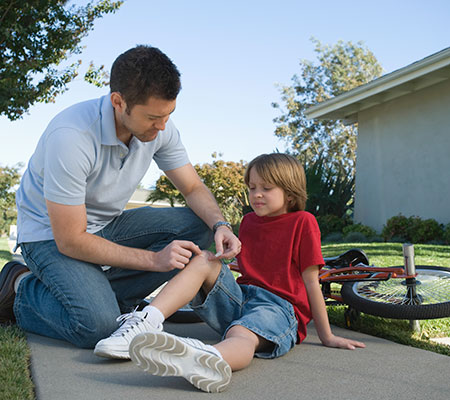
Scarred skin will never be quite as strong as before it was damaged.
They stay with you for a lifetime, but are not your significant other. We’re talking about scars.
Scars form any time there is substantial damage to the skin. As the skin heals, a scar forms.
“The skin has to find a way to heal itself, and it’s never as good as the original skin,” said Dr. Kimberly Clawson, a Marshfield Clinic plastic surgeon. “That scar is only going to be 80 percent as strong as the original skin.”
Skin takes, on average, about six weeks to get to that 80 percent threshold and will never return to full strength.
Types of scars
Some scars, called keloids, generate new scars outside the boundaries of the original scar. Hypertrophic scars are similar to keloids but do not extend beyond the boundaries of the original injury. Scars also can form as a result of acne.
Treatment options
It is common for skin to be tender or even painful at the site of a scar. That pain can be treated by scar massage, which is really just rubbing the scarred area to desensitize it. Scar massage must be done several times a day for months before the skin becomes less tender.
Steroid injections may reduce pain at the site of a scar. Surgery is used in cases where a scar widens or contracts. If a scar is causing limited movement in an area, surgery can lengthen the scar and allow for greater movement.
Scars that form over joints, like your elbow, are particularly difficult to work with. Over time, those scars widen out because of the constant bending of the joint.
It may be possible to conceal or reduce the obviousness of a scar.
“Sometimes we are able to hide a scar through surgery and sometimes we just have to live with them and have them be tales to tell,” Clawson said.
Post-surgery scar care
After surgery for a scar, Clawson advises patients not to swim or soak in a hot tub because those activities can promote infection. However, showering is fine.
Post-surgery, once scabs have healed, you can apply any lotion you like to the area. Clawson emphasized that no specific lotion is proven to reduce scars better than others.
“What’s important is doing that scar massage when you put that lotion on and physically rubbing that scar a few times a day,” Clawson said. “Rubbing desensitizes and helps break up the scar.”
If you have questions or concerns about a scar, talk with your provider.

